Antarctic Curry: Japanese restaurant revives meal eaten by Antarctic explorers
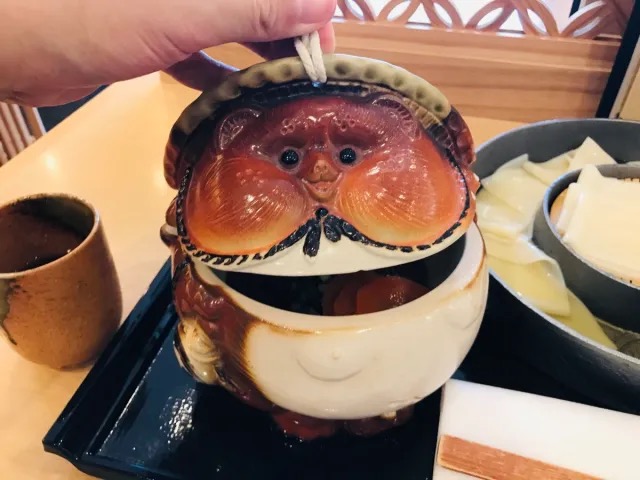
10,000 hours of work went into reviving this dish, and the results were definitely worth it.
Our Gunma-based reporter Takamichi Furusawa was looking for somewhere to eat in Gunma’s Tatebayashi City the other day when he heard about a dish called Antarctic Curry Udon.
That sounded like exactly the kind of dish he needed on this hot summer’s day, when the temperature was hitting 38 degrees Celsius (100 degrees Fahrenheit), so he immediately headed out to the restaurant that was serving it.
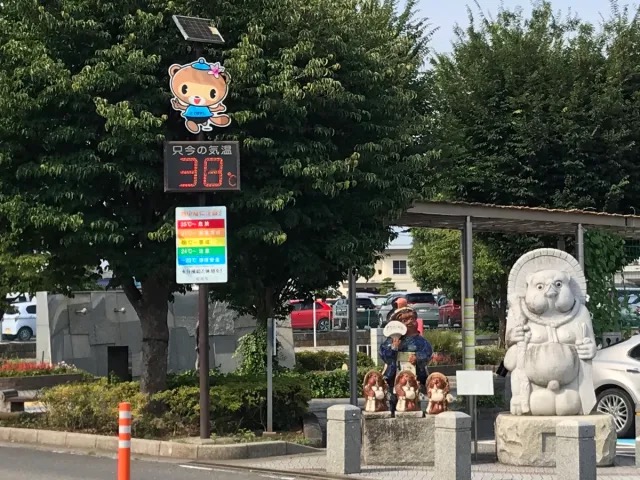
The restaurant is part of a well known chain in Japan called Hanayama Udon, which has a history that stems back 129 years, and this location in Tatebayashi is the main branch.
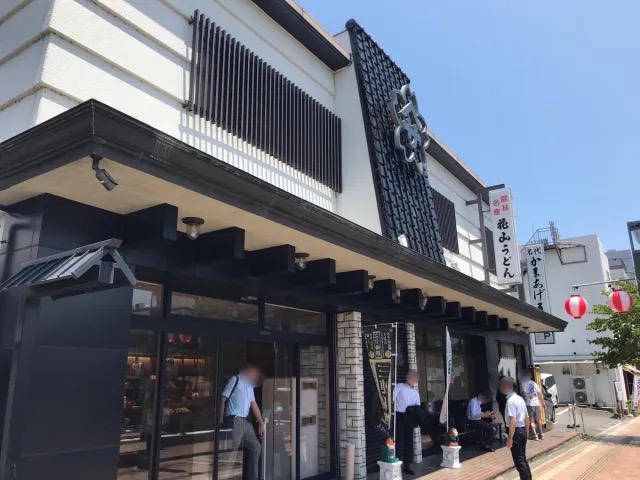
This particular building has the atmosphere of a luxurious merchant house from the Meiji and Taisho eras (1868-1926), and when Takamichi arrived 30 minutes after the opening time, the restaurant was already full, with a line of people waiting outside. The long bench under the eaves suggested that this restaurant was very popular, but thankfully the turnover time wasn’t too long, so Takamichi was able to get in after around 10 minutes.
The interior of the store was beautifully designed, with the warmth of the wood exuding a sense of luxury and adding calmness to the space. Takamichi appreciated the fact that there were counter seats in addition to table seats, making it a good place for solo diners like himself.
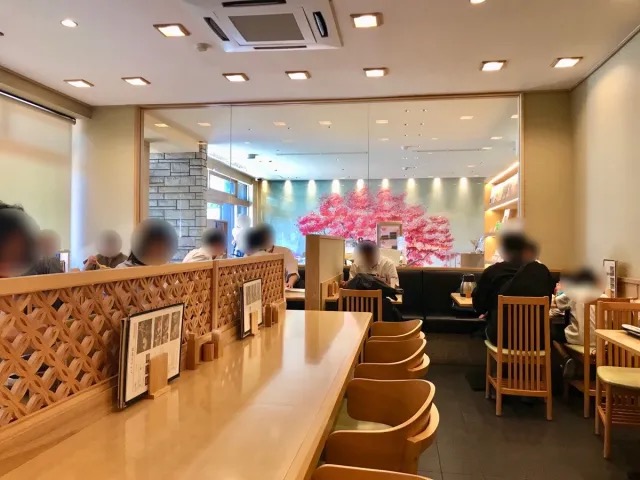
After taking a seat and flipping through the menu, Takamichi finally found what he was looking for — the Antarctic Curry, which was listed as “Marugoto Tamanegi no Nankyuu Curry” (“Whole Onion Antarctic Curry“. The curry (marked in red below) can be ordered with either “tsukemen” (cold dipping noodles) or “kake” (hot noodles in broth). Masanuki had been recommended to order the tsukemen, seeing as that’s the way former Japanese Antarctic expedition members had eaten it, so that’s what he ordered.
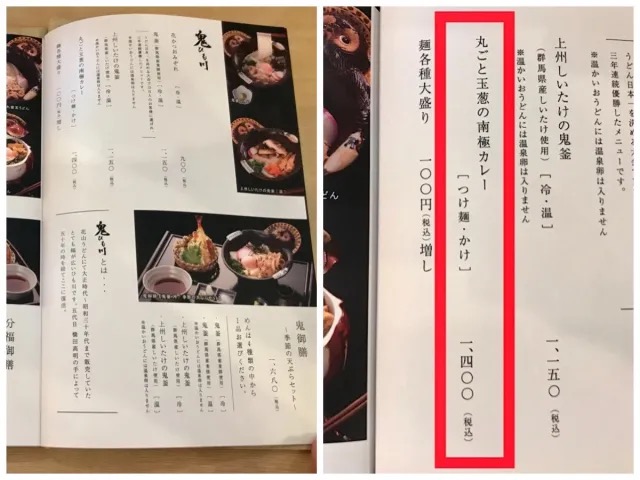
You see, this meal gets its name not from any likeness to the frigid temperatures of the Antarctic but from the Japanese Antarctic expeditions that took place during the Showa era (1926-1989).
In the mid-1950s, when Japanese Antarctic research began, expedition members chose to take Hanayama Udon noodles with them for their long trips abroad, and at base camp, they would use the noodles to make udon curry.
The craftsmen at Hanayama Udon were keen to keep this culinary tradition alive in Japan, so they spent over 10,000 hours working on reviving the dish until they were able to faithfully recreate it, true to the original.
▼ A taste of history, all for 1,400 yen (US$9.58).
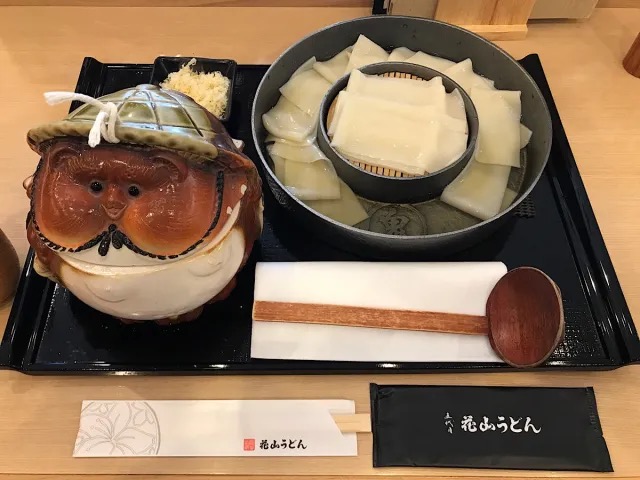
It took less than 10 minutes for Takamichi’s meal to arrive, and the first thing he noticed about it was the gorgeously rotund tanuki raccoon dog that was sitting on his tray.
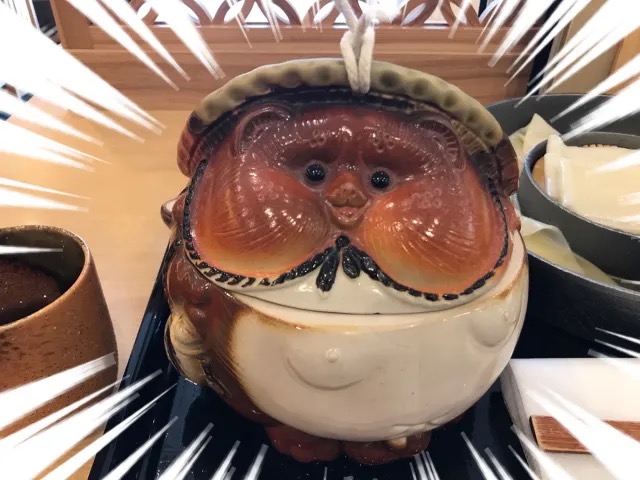
The smiling animal brought a smile to Masanuki’s face, and when he ceremoniously raised its head, his smile grew wider as there was a large mound of curry sauce inside the clay container. The delicious scent of curry wafted up to Takamichi’s nostrils, stimulating his appetite, and the carrot and green onion topping added a bright look to the presentation.
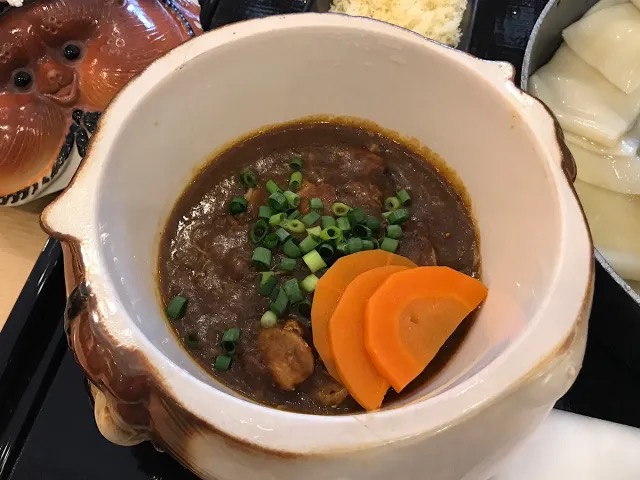
The curry sauce was nice and thick, and when he lifted a spoonful to his mouth he could see large chunks of chicken in the mix. Though the menu had mentioned “whole onion” in relation to this dish, there was no whole onion present, leading Takamichi to think it must’ve been added whole during the cooking process to bring out the sweetness and richness of the curry.
▼ However they made it, it was absolutely exquisite, with a rich depth and well-rounded sweetness that was absolutely addictive.
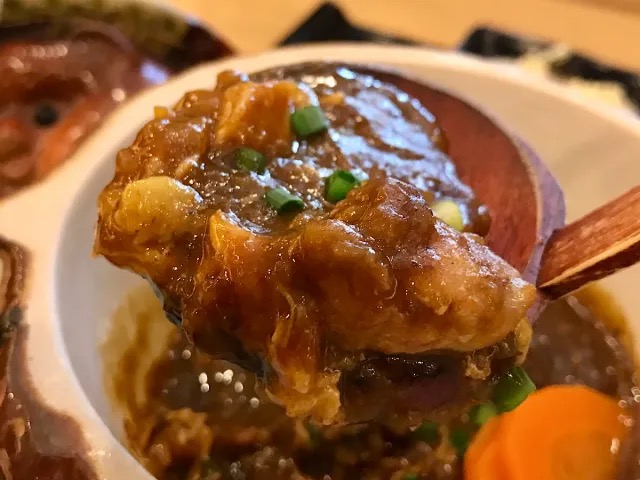
Takamichi resisted the temptation to devour the curry immediately on its own, and instead proceeded to eat it the way it was intended, with the noodles.
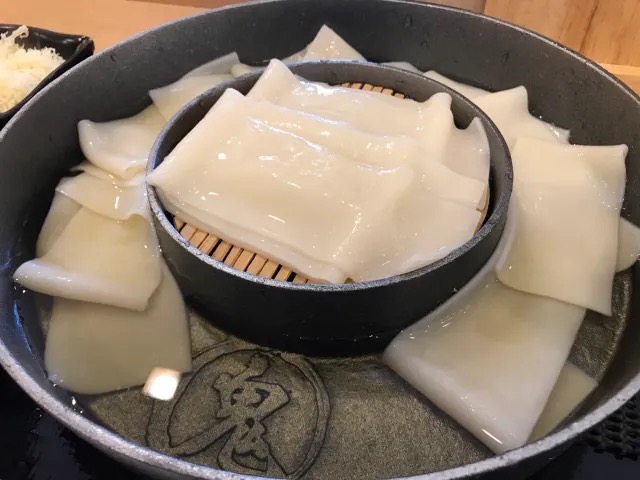
The noodles were wide and thin, with a width of about 5 centimetres (2 inches). This type of wide noodle is a Gunma specialty known as himokawa udon, and here they were served beautifully in a metal bowl to keep them nice and cool throughout the meal.
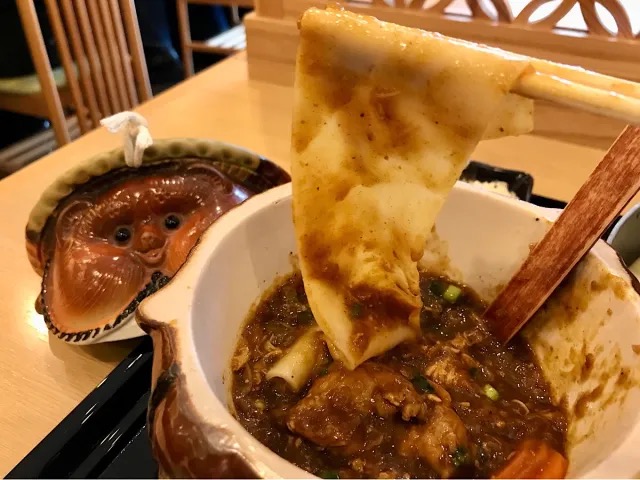
When he combined the chewy noodles with the curry sauce, the combination was utterly delicious! The sweetness of the onion, the flavour of the bonito, and the perfect width of noodle to pick it all up with made for an excellent combination.
▼ The 10,000 hours of effort it took to devise this meal were evident in every delicious mouthful.
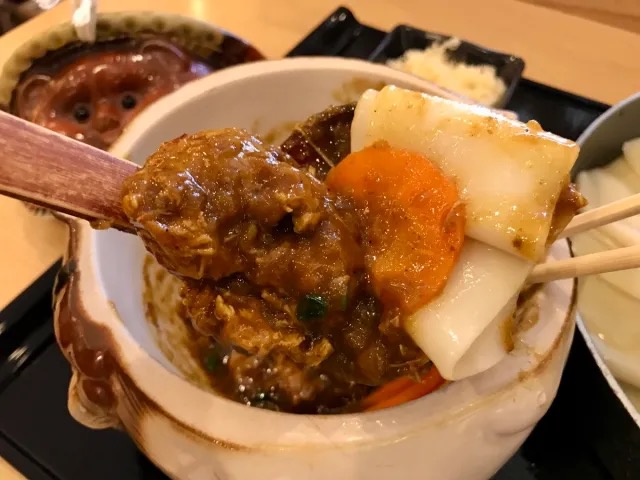
It was really amazing to be able to taste a dish that fuelled Japan’s intrepid explorers back in the day. When you’re exploring new worlds, flavour is a prime element to keep the spirits up, and Takamichi felt a sense of pride that Japanese curry was the dish that kept them going.
It was a fantastic meal, and one you should definitely try while in Japan. If you’re unable to travel to Gunma, Hanayama Udon sells the Antarctic Curry at branches in Tokyo as well, so definitely check it out if you’re interested!
Restaurant information
Hanayama Udon Head Restaurant / 花山うどん(本店 お食事処)
Address: Gunma-ken, Tatebayashi-shi, Honmachi 2-3-48
群馬県館林市本町2-3-48
Open 11 a.m.-3 p.m. (may close when noodles run out)
Closed Sundays
Website
Photos ©SoraNews24
● Want to hear about SoraNews24’s latest articles as soon as they’re published? Follow us on Facebook and Twitter!
Credit:

0 comments:
Post a Comment